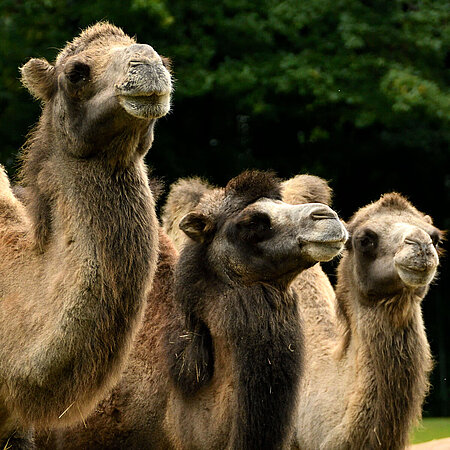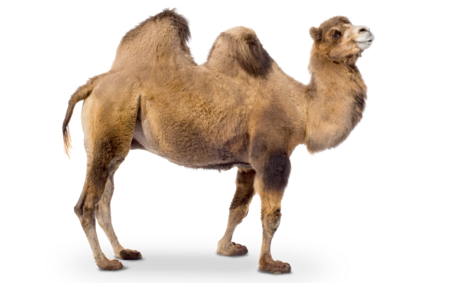Bactrian Camel
Camelus bactrianus

- Family
- Camels (Camelidae)
- Weight
- 500 – 1.000 kg
- Habitat
- Deserts, semi-deserts, salt steppes
Domestication
About 4,500 years ago, humans domesticated wild camels for use as a transport animal for goods and people. Camels also provided an important source of wool, milk and meat. Today, the wild Bactrian camel is on the brink of extinction in their native Kazakhstan in Central Asia. The two-humped camel exhibited in zoos is not the wild species (camelus ferus ferus), but the domesticated Bactrian camel (camelus ferus bactrianus).

Rolling gait and long eyelashes
Bactrian camels have two-toed feet with toenails and soft pads to cushion their footsteps. They walk by moving both the front and back legs on the same side of the body at the same time, producing an awkward rolling gait. Bactrian camels are specially adapted to life in the desert with features such as two rows of long, thick eyelashes and narrow, closeable nostrils for protection against sandstorms.
Fascinating fact
Male camels have long, sharp canines that they use in bitter fights with other males over a female.
Distribution
